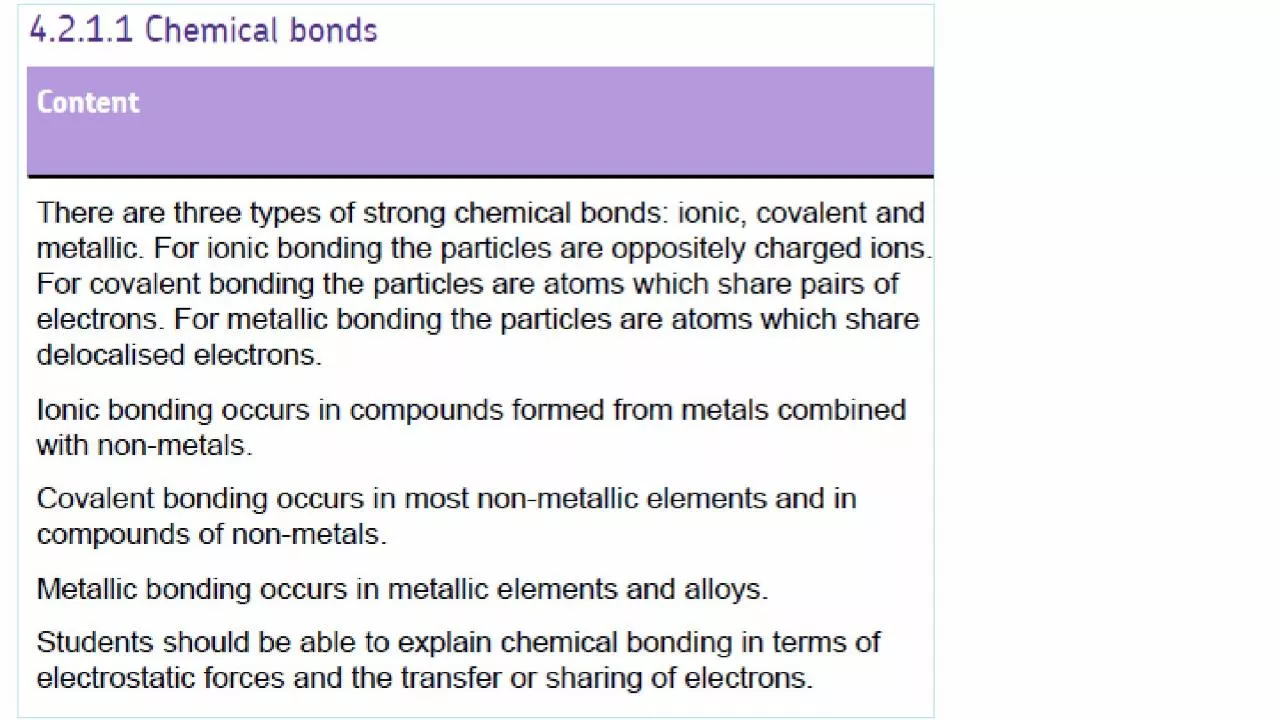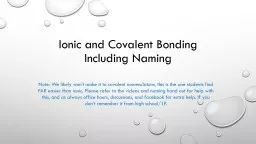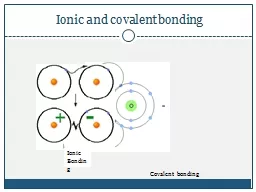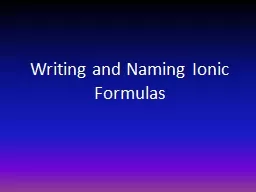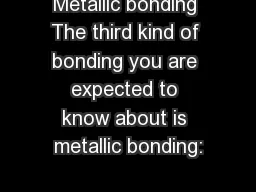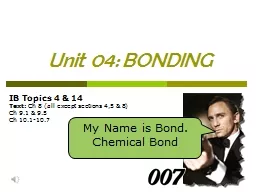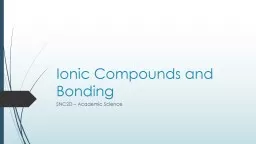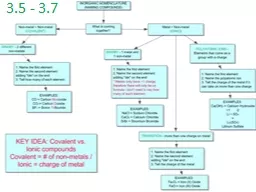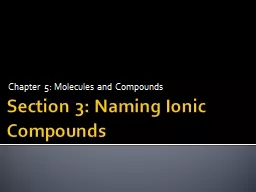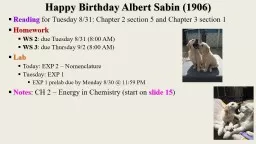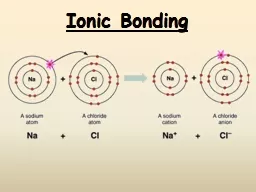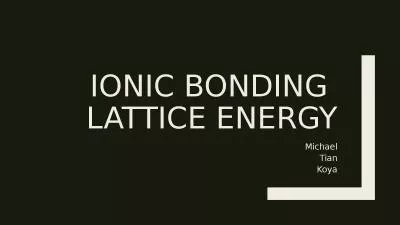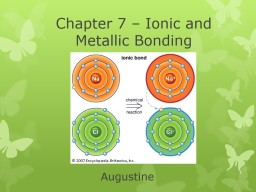PPT-Ionic bonding (metal + non-metal)
Author : bency | Published Date : 2024-02-02
Ionic bonds form a giant lattice structure Sodium chloride is an ionic compound formed by the reaction between the metal sodium and the nonmetal chlorine During
Presentation Embed Code
Download Presentation
Download Presentation The PPT/PDF document "Ionic bonding (metal + non-metal)" is the property of its rightful owner. Permission is granted to download and print the materials on this website for personal, non-commercial use only, and to display it on your personal computer provided you do not modify the materials and that you retain all copyright notices contained in the materials. By downloading content from our website, you accept the terms of this agreement.
Ionic bonding (metal + non-metal): Transcript
Download Rules Of Document
"Ionic bonding (metal + non-metal)"The content belongs to its owner. You may download and print it for personal use, without modification, and keep all copyright notices. By downloading, you agree to these terms.
Related Documents

